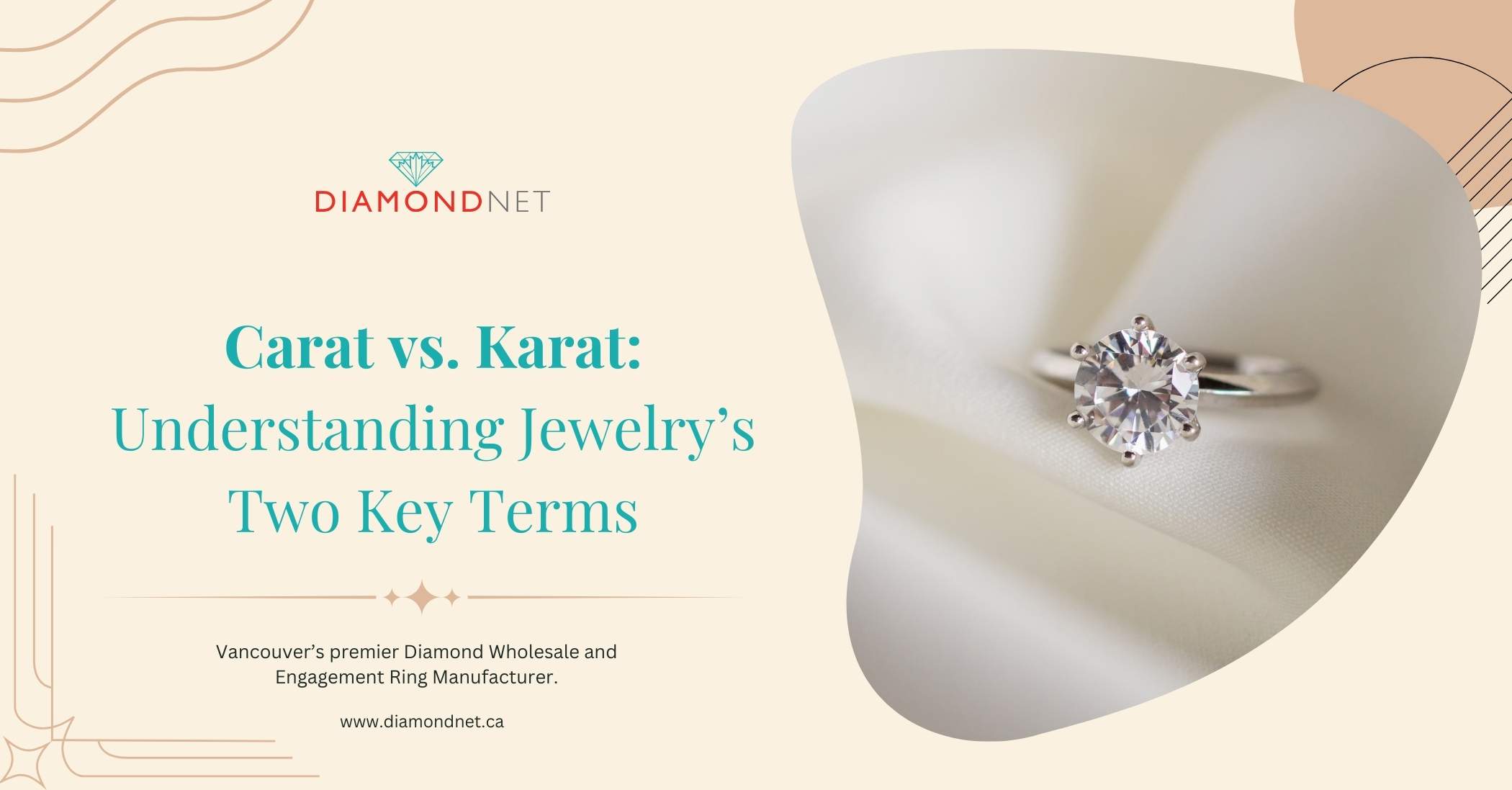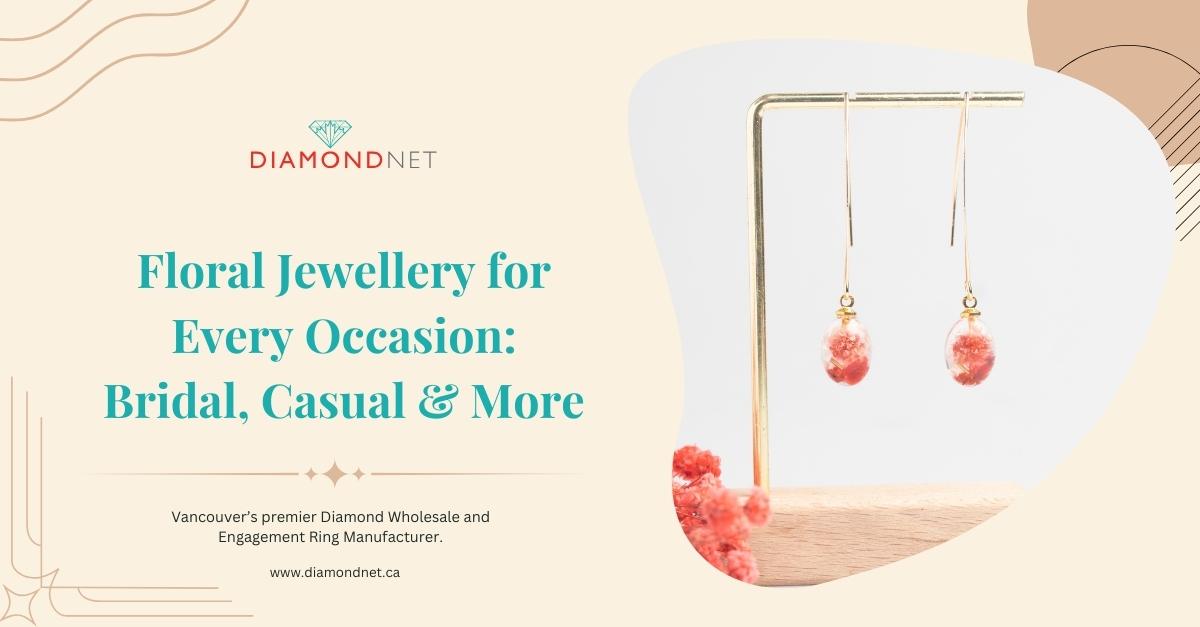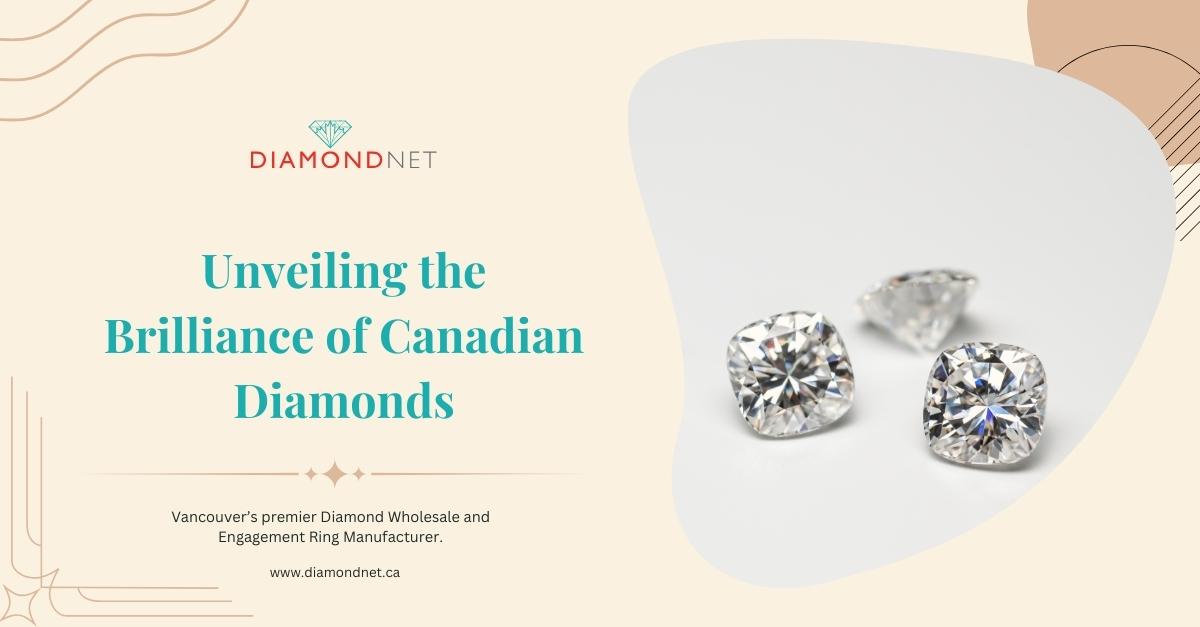When shopping for fine jewellery, such as engagement rings or gold accessories, understanding the difference between carat and karat is essential. Though they sound alike, they refer to two distinct aspects of jewellery. Carat measures the weight of gemstones, particularly diamonds, while karat indicates the purity of gold.
This guide will break down the difference between carat and karat, explain their significance, and help you understand how they influence your jewellery choices. Whether you’re selecting the perfect diamond or evaluating gold purity, having this knowledge will empower you to make informed decisions and choose jewellery that best suits your needs.
What does carat mean in diamonds?
Carat is the unit of weight used to measure gemstones, particularly diamonds. One carat equals 200 milligrams (0.2 grams), and this measurement plays a crucial role in determining a diamond’s size and value.
For example, a 1-carat diamond weighs exactly 200 milligrams, but carat weight alone does not determine a diamond’s overall quality. While larger diamonds are generally more valuable, cut, colour, and clarity significantly impact a stone’s brilliance and price.
To make an informed purchase, it’s important to consider all these factors together. Learn more by understanding diamond quality factors to see what truly defines a diamond’s worth beyond its weight.
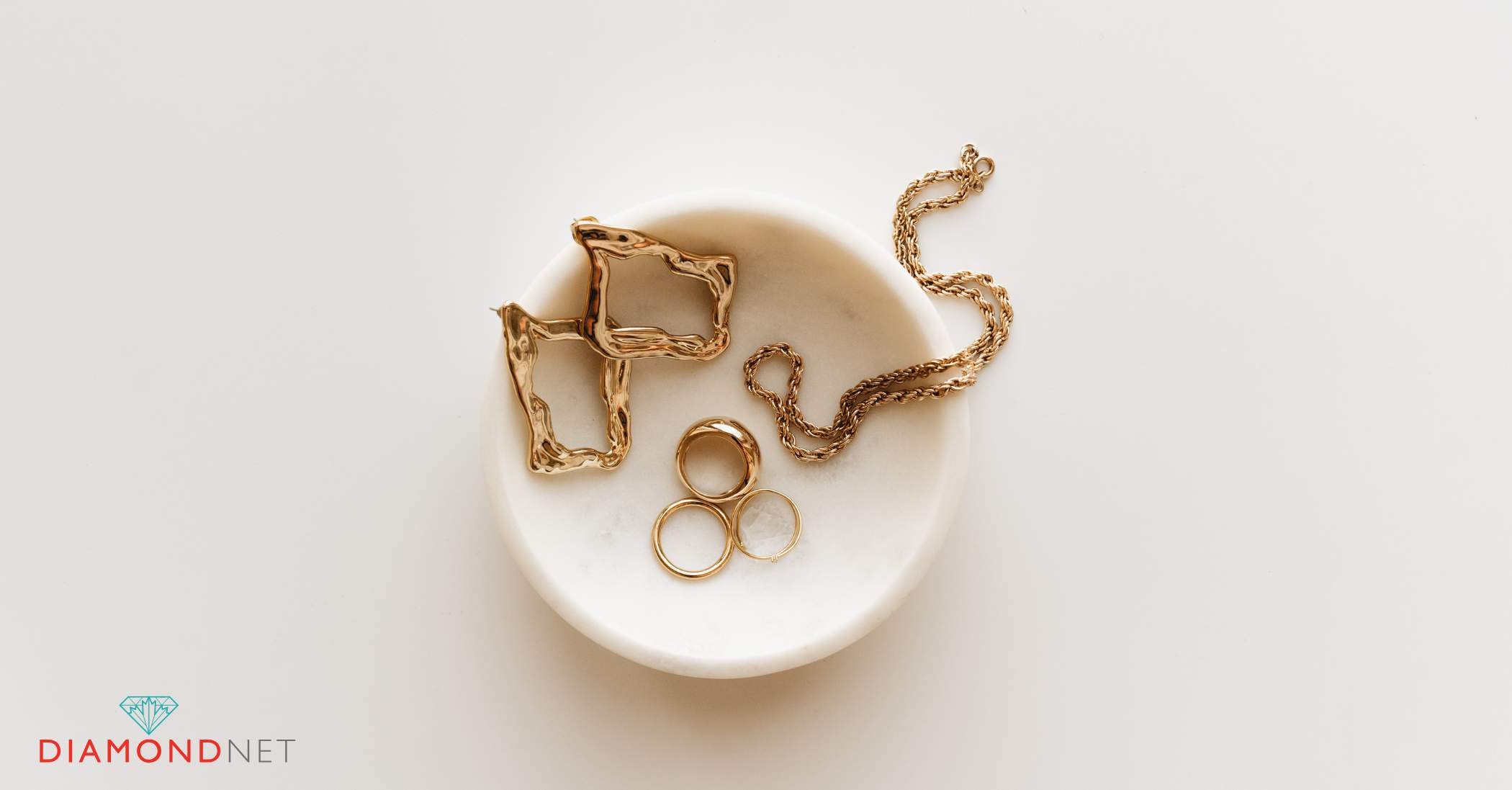
What is Karat? Understanding Gold Purity
Karat is a measure of gold purity, expressed on a 24-part scale. Pure gold is classified as 24 karat (24K), meaning it is 100% gold with no additional metals. However, pure gold is soft and prone to scratching, making it less practical for everyday wear.
Most gold jewellery is made with lower-karat gold, which is alloyed with metals like silver, copper, or zinc to increase durability. For example, 18K gold contains 75% gold and 25% other metals, while 14K gold has 58.3% gold. The lower the karat, the stronger the piece, making it more suitable for daily wear.
What is the best karat gold for everyday jewellery?
For everyday jewellery, 14K and 18K gold are the most popular choices. These karat levels offer a balance of purity and durability, making them ideal for engagement rings, wedding bands, and other frequently worn pieces.
If you’re unsure about which gold purity suits your needs, consulting a professional can help you make the best choice. Learn more about [choosing the right gold purity for jewellery] to find a piece that fits your style while maintaining its beauty for years.
The Origins and Evolution of Carat and Karat in Jewellery
The terms carat and karat have distinct historical origins that have shaped their usage in the jewellery industry over centuries.
Carat
The word carat comes from the ancient Greek word keration, meaning carob seed. Carob seeds were historically used as a standard for weighing gemstones due to their relatively consistent weight, making them an ideal reference for merchants.
Over time, carat became the standard unit of weight for diamonds and other gemstones. Today, one carat is officially defined as 200 milligrams (0.2 grams). Understanding this measurement is essential when purchasing diamonds, as it plays a key role in determining a gemstone’s size and value.
Karat
Karat, on the other hand, refers to gold purity and originates from the Arabic word qirat, which also referred to carob seeds. In ancient times, gold was measured using this term, as different gold alloys varied in purity.
A 24-part scale was later established to determine the percentage of pure gold in an alloy, with 24-karat gold representing pure gold. This system was widely adopted in Europe during the medieval period and has since become the global standard for evaluating gold purity.
Both carat and karat remain fundamental in the jewellery industry—carat for measuring gemstones and karat for assessing gold purity.
How Carat and Karat Impact Jewellery Purchases
When purchasing jewellery, carat and karat play essential roles in determining the overall value, durability, and appearance of a piece.
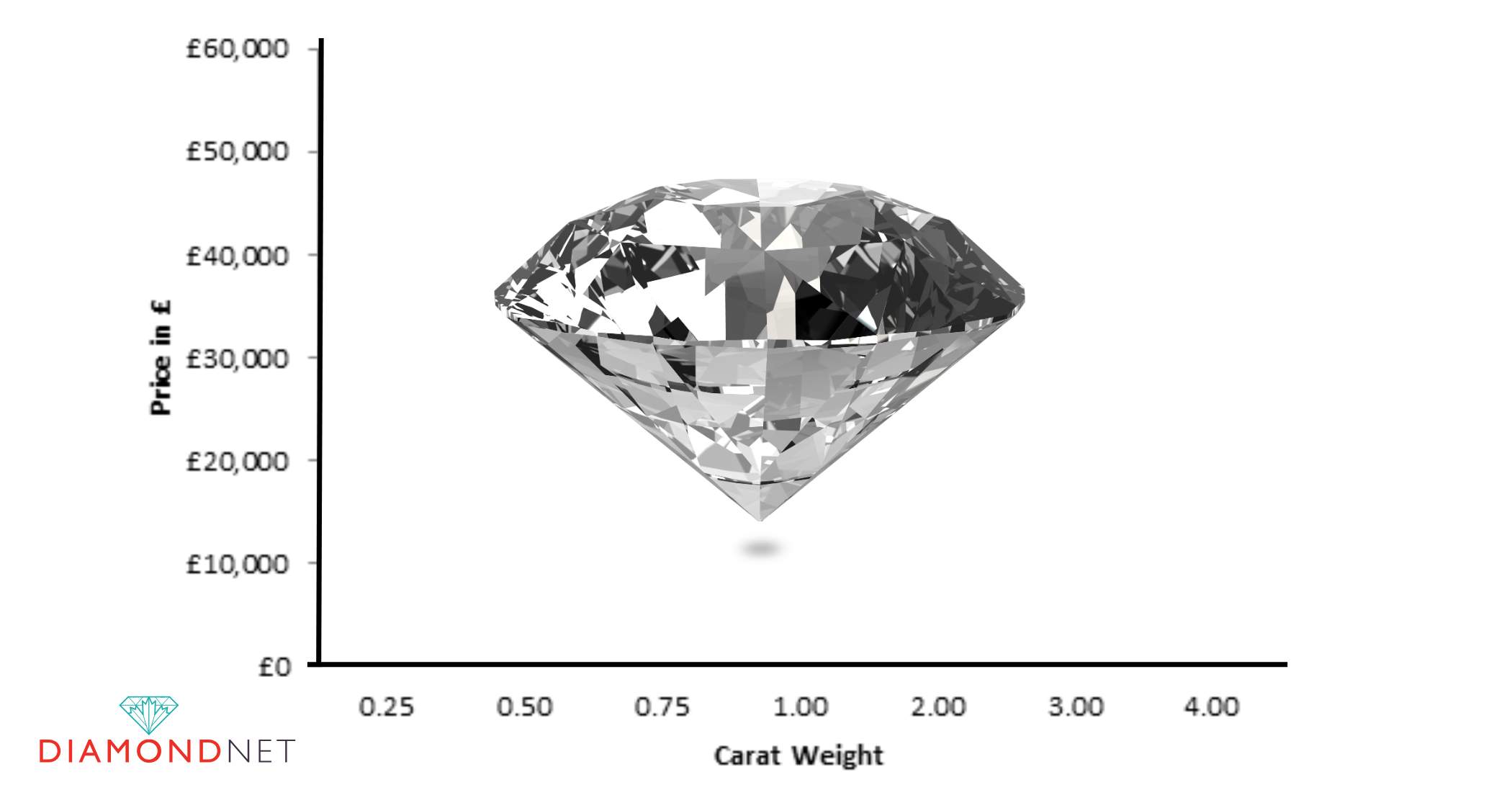
Carat Weight and Gemstone Value
The carat weight of a gemstone significantly influences its value and visual presence. Larger gemstones with higher carat weights are generally more valuable due to their rarity and high demand. However, carat weight alone does not determine a gemstone’s worth.
Other factors, such as cut, clarity, and colour, play a crucial role in assessing quality. For example, understanding how carat weight influences price is essential when choosing a diamond. The price per carat increases significantly for larger diamonds, making carat weight an important consideration in jewellery selection.
Karat Purity and Gold Durability
Karat measures the purity of gold in jewellery. Since pure gold is too soft for everyday use, it is often alloyed with other metals to increase durability. While 24-karat gold is pure, it is also prone to scratching, making lower-karat options more practical for daily wear.
Most jewellery is crafted from 18-karat or 14-karat gold, which balances purity with strength. Higher karat gold offers a richer yellow hue, while lower karat alloys may have variations in colour depending on the metals mixed in.
Suitability for Different Jewellery Types
Gold purity is particularly important when choosing jewellery meant for regular wear, such as engagement rings or wedding bands. A balance between durability and aesthetics is necessary.
- 14-karat gold is often chosen for everyday rings due to its strength and affordability.
- 18-karat gold is preferred by those who want a more luxurious look with higher gold content.
Whether selecting a diamond or choosing gold jewellery, considering both carat and karat helps find the right balance between appearance, value, and durability. To guide your decision, check out DiamondNet’s guide to engagement ring shopping for tips on making an informed purchase.
Which is more important: carat or karat?
The importance of carat versus karat depends on what you are purchasing. For gemstones, carat weight is a major factor in value, while for gold jewellery, karat dictates purity and durability. Understanding how both elements impact jewellery ensures you make the best choice for your needs.
Carat and Karat: Key Differences in Gemstones and Gold
The table below illustrates the differences between carat weight in gemstones and karat purity in gold, helping you understand their impact on jewellery.
The Essential Differences Between Carat and Karat |
||||
| Gemstone Carat Weight | Approximate Milligrams (mg) | Gold Karat Purity | Percentage of Purity | Description |
| 0.25 carat | 50 mg | 24K (Pure Gold) | 99.9% | 100% Pure Gold, Ideal For High-End Jewellery But Soft |
| 0.5 carat | 100 mg | 22K | 91.6% | Rich Yellow Color, Less Common For Daily Wear |
| 1.0 carat | 200 mg | 18K | 75% | Durable, Commonly Used For Engagement Rings |
| 2.0 carat | 400 mg | 14K | 58.3% | Stronger, Used For Durable Jewellery Like Rings |
| 3.0 carat | 600 mg | 10K | 41.7% | Most Affordable Gold, Suitable For Fashion Jewellery |
Common Misconceptions About Carat and Karat
Many people mistakenly use the terms carat and karat interchangeably, but they refer to completely different aspects of jewellery. Carat measures the weight of gemstones, particularly diamonds, while karat indicates the purity of gold.
Another common misconception is that higher-karat gold is always the best choice. While 24K gold is pure, it is also soft and prone to scratching, making it less practical for everyday jewellery like engagement rings. Lower-karat gold, such as 18K or 14K, offers a better balance of durability and gold content, making it ideal for daily wear without compromising appearance.
Understanding the difference between carat and karat ensures you can make informed decisions based on gemstone weight and gold quality, helping you choose jewellery that fits both your aesthetic and practical needs.
Conclusion
Carat is the unit of weight used to measure gemstones, influencing their size and value, while karat refers to gold purity, affecting durability, colour, and suitability for different types of jewellery. Understanding the difference between these two terms is essential when selecting diamonds or gold jewellery.
Whether you’re choosing a diamond for an engagement ring or evaluating gold purity, knowing how carat and karat impact jewellery will help you make more informed decisions.
If you need guidance in selecting the right gemstone or gold purity, the experts at DiamondNet are here to help. Schedule a consultation today to find the perfect jewellery for your needs and make your purchase with confidence.
